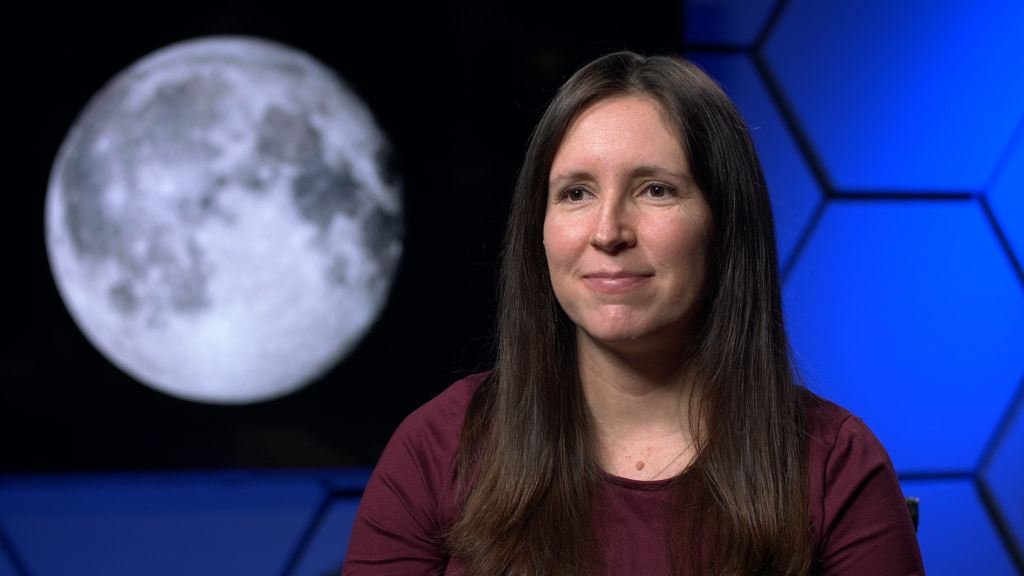NASA Explorers | Season Five: Artemis Generation
It’s not rockets and satellites that make NASA soar. It’s people. “NASA Explorers” is an award-winning video series that introduces viewers to the diversity of people and talents behind some of the most ambitious NASA missions.
On season 5 of NASA Explorers, “Artemis Generation,” you’ll meet the scientists and engineers who are studying Moon rocks, building tools, working aboard NASA’s International Space Station, and training astronauts in preparation for landing humans on the surface of the Moon through NASA’s Artemis missions.
Trailer for Season 5 of NASA Explorers: "Artemis Generation"
Music is “Soaring Dreams” by Anders Paul Niska and Klas Johan Wahl from Universal Production Music.
Vertical version of the series trailer
Music is “Soaring Dreams” by Anders Paul Niska and Klas Johan Wahl from Universal Production Music.
Episode 1: "We are the Artemis Generation"
On season 5 of NASA Explorers, “Artemis Generation,” you’ll meet the scientists and engineers who are studying Moon rocks, building tools, working aboard NASA’s International Space Station, and training astronauts in preparation for landing humans on the surface of the Moon through NASA’s Artemis missions.
Watch this video on the NASA.gov Video YouTube channel.
Music is from Universal Production Music, including: “Blackbird” by Magnum Opus, “Optimistic Attitude 1” by Joel Goodman and Vicente Julio Ortiz Gimeno, “By the Moonlit Lake” by Mark Choi, “Beside You” by Dominic Marsh and Giovanni Tria, “Playground Intrigue” by Brice Davoli, and “Momentous” by Le Fat Club and Olivier Grim
Episode 2: "Moon Rocks"
Meet NASA’s rock detectives. Using tiny samples of lunar rock brought back by Apollo astronauts, these NASA Explorers are looking into the origins of our Moon, our planet, and ourselves. They might be among the first scientists to study samples from the Moon’s South Pole that will be delivered to Earth by Artemis astronauts. In episode 2 of “NASA Explorers: Artemis Generation,” we’re joining scientists like Natalie Curran and Jose Aponte, who are looking at clues buried in Moon rocks.
Watch this video on the NASA.gov Video YouTube channel.
Music is from Universal Production music, including: “Darwin’s Extraordinary Journey” by Laurent Dury, “From Small Beginnings” by Jay Price, “Life Eternal” by Enrico Cacace and Lorenzo Castellarin, “All is Good” by Anders Niska and Klas Johan Wahl, and “Hyperion” by Gresby Race Nash.
Episode 3: "Space School"
Before Jessica Watkins was an astronaut, she was a geologist. Now working on the International Space Station, Jessica and her fellow astronauts are preparing to explore the Moon and beyond.
But collecting and investigating rocks on other worlds is very different from digging dirt here on Earth. That’s where tools engineer Adam Naids comes in. Tools designed for Earth geologists may not work in the lower gravity and extreme temperatures of the Moon, and that’s before you bring in the bulky spacesuits! NASA Explorers come together at space school to train astronauts to conduct science on the Moon.
Watch this video on the NASA.gov Video YouTube channel.
Music is from Universal Production Music, including: “Iced Planet” by Anthony Edwin Phillips and Samuel Karl Bohn, “The Deep” by Paul Werner, “Carpe Diem” by Michael James Burns, “State of Matter” by Markus Gleissner, “A Grand Enterprise” by Daniel Marantz and Dave Carr, “Optimistic Attitude 1" by Joel Goodman and Vicente Julio Ortiz Gimeno, “Dawn Beauty” Laurent Dury, “Take it Lightly” by Carl David Harms and “Imaginary Travel” by Claude Pelouse and Olivier Grim.
Episode 4: "The South Pole"
When Artemis astronauts land on the Moon, they’ll travel to sites never before visited by humans. Namely, they'll explore the South Pole region, home to the Moon’s largest crater, areas of near-constant light and deep shadows, and some of the coldest temperatures in the solar system.
Exploring the South Pole will teach us more about the Moon’s history, as well as the history of our solar system. It's home to frozen water, which is crucial for living sustainably on the lunar surface and exploring deeper into the solar system.
Artemis astronauts will explore the Moon on behalf of all of us and bring back lunar rocks and soil for analyses by generations of scientists who will help us gain unimaginable insights into our cosmic history.
Watch this video on the NASA.gov Video YouTube channel.
Music is “Daylight Falls” by Jay Price, “Good Omens” by Count Zero and Rohan Stevenson, “Lightspeed” by Gresby Race Nash, “Wonders of Life” by Enrico Cacace and Lorzeno Castellarin, “Hold Still” by Enrico Cacace, and “We Shall Overcome” by Laurent Couson.
Credits
Please give credit for this item to:
NASA's Goddard Space Flight Center
-
Director
- James Tralie (ADNET Systems, Inc.)
-
Narrator
- James Tralie (ADNET Systems, Inc.)
-
Video editor
- James Tralie (ADNET Systems, Inc.)
-
Sound editor
- James Tralie (ADNET Systems, Inc.)
-
Videographers
- James Tralie (ADNET Systems, Inc.)
- John Caldwell (Advocates in Manpower Management, Inc.)
- Rob Andreoli (Advocates in Manpower Management, Inc.)
- Molly Wasser (ADNET Systems, Inc.)
-
Producers
- Lonnie Shekhtman (ADNET Systems, Inc.)
- Molly Wasser (ADNET Systems, Inc.)
- Kathryn Mersmann (NASA/GSFC)
- Lauren Ward (KBR Wyle Services, LLC)
-
Writers
- Lonnie Shekhtman (ADNET Systems, Inc.)
- Molly Wasser (ADNET Systems, Inc.)
-
Editor
- Lonnie Shekhtman (ADNET Systems, Inc.)
-
Visualizer
- Ernie Wright (USRA)
-
Scientists
- Kelsey Young (NASA/GSFC)
- Natalie Curran (NASA)
- Jessica Watkins (NASA)
- Jose C. Aponte (NASA/GSFC)
- Noah Petro (NASA/GSFC)
- Adam Joshua Naids (NASA/JSC)
- Julie L. Mitchell (NASA/JSC)
Release date
This page was originally published on Wednesday, September 21, 2022.
This page was last updated on Wednesday, May 3, 2023 at 11:43 AM EDT.
